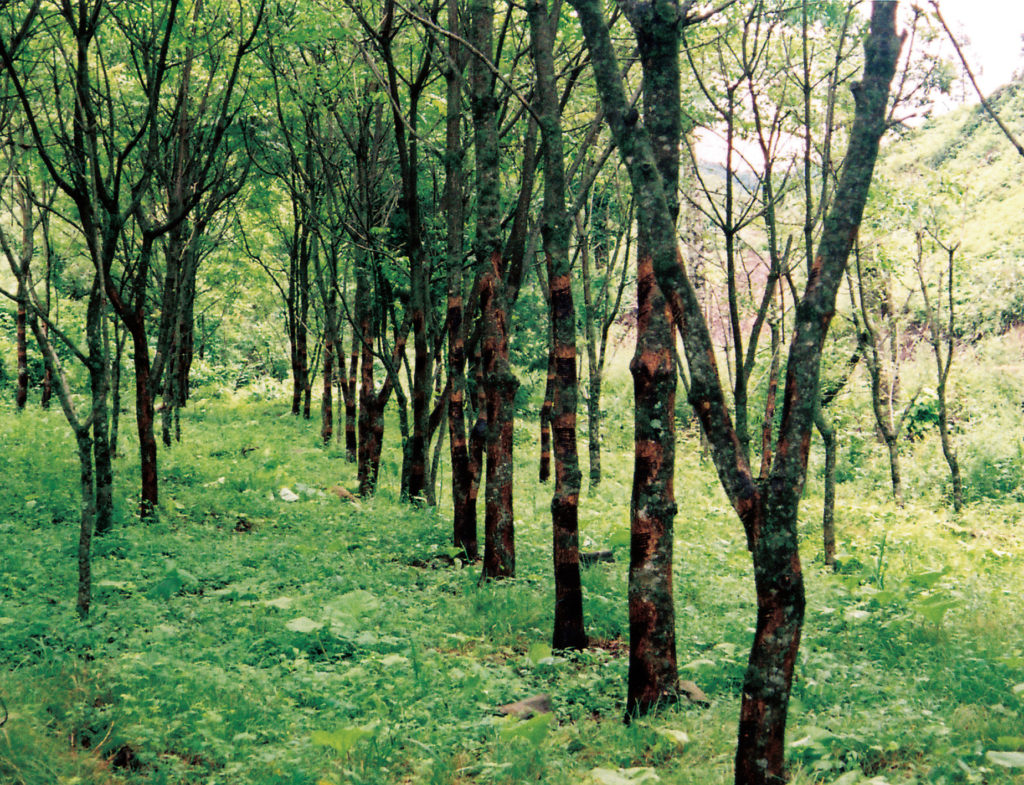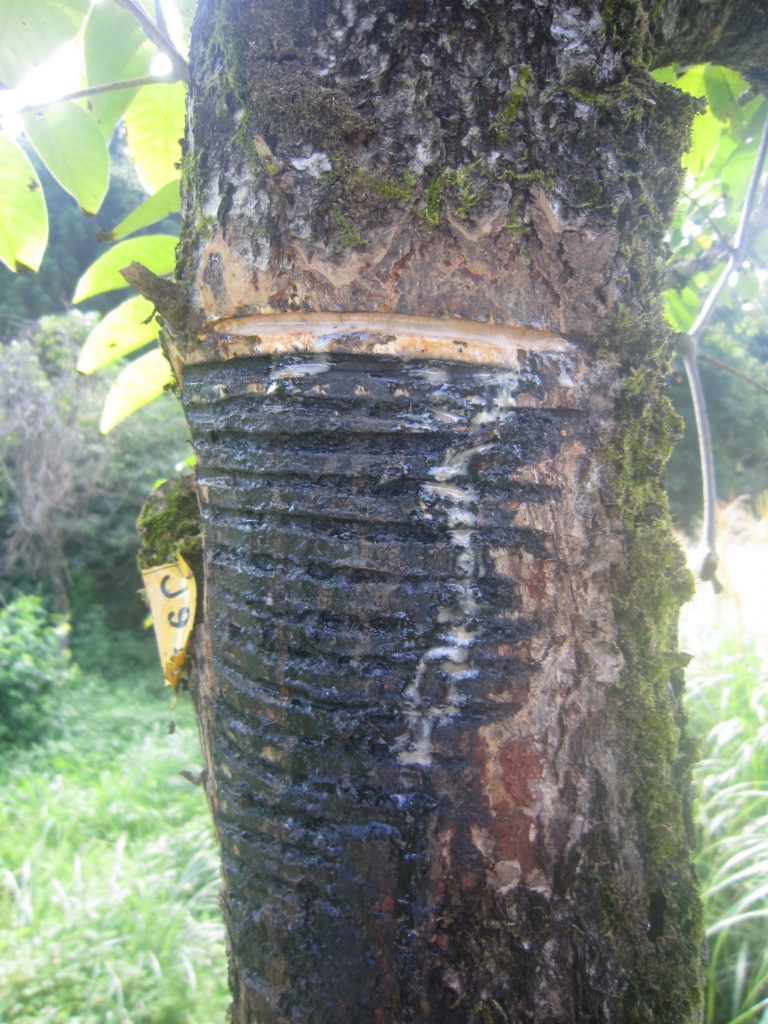What is urushi?
Urushi is the sap of the urushi (or lacquer) tree. Its scientific name is Rhus Vernicifera. It is a member of the Anacardiaceae (sumac) family, and is native to China, Korea, Japan, and the eastern Himalayas region. The sap of this tree contains a resin-urushiol, which when exposed to moisture and air, polymerises and becomes a very hard, durable, plastic-like substance, lacquer. Urushi is, in fact, a natural plastic. A similar tree, with similar properties, is found in South-East Asia.
History
There is evidence that stone-age peoples discovered the useful properties of the sap of the urushi tree. They first used its adhesive properties in the making of spears and arrows. In early Japan, the people of recognizing the durability and shining beauty of urushi began using it to coat wood, pottery, baskets and bone objects. From its first use in the making of bowls, plates, trays, sake cups, boxes, combs and other objects, the use of urushi developed along with culture. In Japan the urushi bowl or plate became a part of the harmony of traditional Japanese food. In the noble court culture classical styles took form. Maki-e and raden urushi techniques elegantly used gold and silver to ennoble furniture, make-up accessories, toys, and writing implements.
Urushi also became an integral part of the harmony of Natsume (tea canisters), Kogou (incense burners) and other tools and utensils used in the tea ceremony. Outside the court, urushi was used in Buddhist temples and in the making of armour, helmets, swords, and other implements of war. In the Edo period that is from about 1600 to 1867 people adorned themselves with beautiful urushi medicine cases, combs and hairpins. In the 17th Century, the Dutch East India Company introduced Japanese and Chinese lacquer ware to Europe.
In eighteenth century Chinese screens were imported into Europe, often for the purpose of being used to create new objects. These panels could be split to make two surfaces of lacquer which could be used as wall panels or cut down to use in cabinets. Many of these hybrid pieces of furniture are found in museums and private collections today.
In the twentieth century a number of designers working in France began to use Asian lacquer for furniture and other decorative arts. Eileen Gray and Jean Dunand are two of the artists who produced screens, furniture and paintings using Asian lacquer.
Today, while many craftspeople still make beautiful lacquer ware, urushi has become an important material in the art scene in Japan and other parts of Asia. Contemporary artists are increasing working with urushi, its colours, shapes and techniques, in their paintings, art objects and jewellery.
Properties and uses
– Protective
Urushi is a liquid that can be applied to just about any surface – wood, metal, cloth, ceramics, etc. When it solidifies, it becomes a very hard coating that waterproofs and protects the coated object from the effects of mould, mildew, and other forms of weathering. It also provides protection against caustic substances, such as acids. Only direct and prolonged exposure to sunlight will cause urushi to deteriorate. Urushi hardness and durability make it an excellent protective coating for any object required to be preserved and used continually over a long period of time.
– Adhesive
The first use of urushi was as an adhesive. Stone age people first used it in the making of spears and arrows. They discovered that pointed stone, or metal could be bound to wooden shafts using urushi. Today, its adhesive property is used to connect object pieces and to attach decorations using metal leaf, powder, shell, etc.
– Form and shape
By adding clay powder to thicken it, urushi can be shaped into decorative objects. Cloth is also given form and shape by coating it with rice glue-urushi mixture.
– Decoration
Urushi resin can be dyed black, red, brown, yellow and several other colours. Gold leaf or powder is used to decorate objects. In addition, various types of shell inlay work are done to enhance the beauty of objects.
Especially in Japan, the decorative power of urushi has become an important aspect of its artistic culture.


